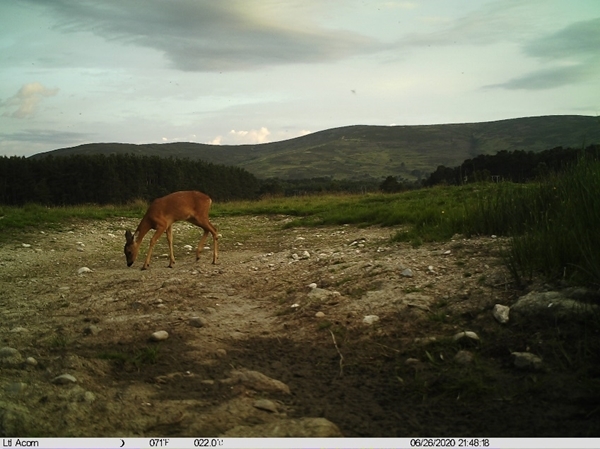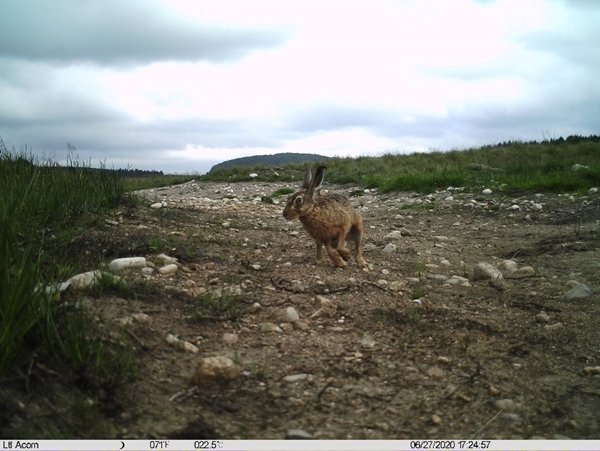Last year, as part of our Agri-Environment Climate Scheme (AECS) agreement, we created two new wader scrapes. As the name suggests, these are shallow depressions in the ground in a reasonably wet area so that you create some standing, shallow water but with a wide, muddy edge. If sited sensibly in reasonably open areas, these can provide useful foraging habitat for wading birds that probe for invertebrates in soft earth.
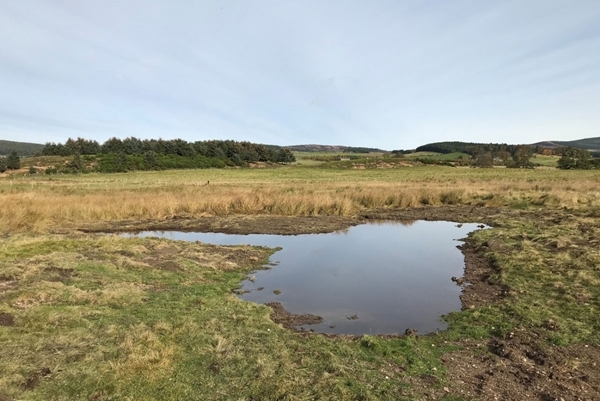 New wader scrape at Auchnerran, shortly after creation in 2019.
New wader scrape at Auchnerran, shortly after creation in 2019.
This year we were keen to see if the waders were making use of the scrapes, so Elizabeth Ogilvie and Max Wright, our placement students, organised a small trail-camera study to try to capture any action in the area. This revealed that there were indeed some waders hanging around and one or two other things as well…
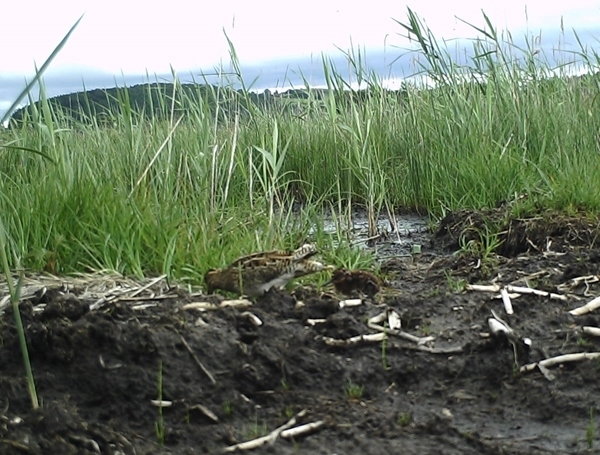
A snipe rootling around, closely followed by a chick. These waders love soft, wet ground,
so no great surprise to see them here, but this is a rare glimpse of a snipe chick.
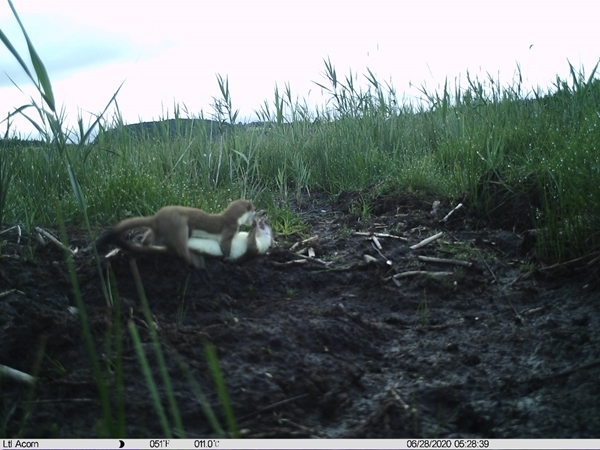
Not quite so good was the abundance of stoats we found. Here just two playing
together but we recorded families of up to four individuals in shot at once!
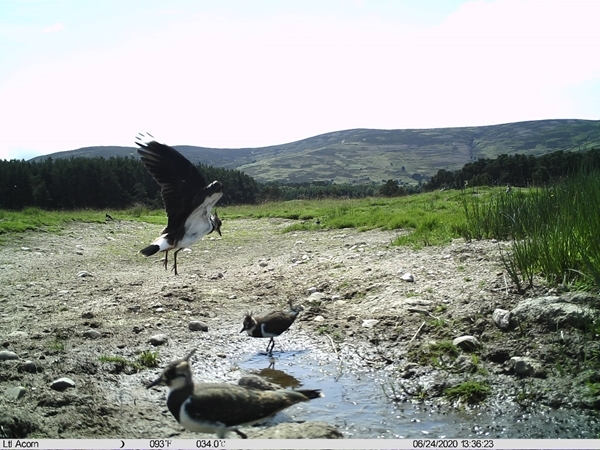
Later in the season we always start to see the waders moving away from their breeding grounds as
they begin their preparations for winter. Here, some juvenile lapwings hang out at one of the scrapes,
presumably fuelling up before they move on in a month or two. (Our tagging studies have shown most
of ‘our’ birds probably winter in Ireland.)
Other sightings at the scrapes, so far, include roe deer and hares, plus some duck and a few other birds. We will keep monitoring the area in the coming months and years, not just to see what wildlife they attract but also to stay on top of their management. It is important that they don’t become overgrown with vegetation round the edges, as this makes them less attractive to wading birds. Also, as these photographs show, come midsummer the scrapes started to dry out a little this year, so we will need to keep an eye on this and adjust them if needed to make sure they maintain a small amount of standing water (a requirement of the AECS), perhaps by extending them appropriately or increasing their depth in places.
We’ll report on the scrapes again in the future and show how they develop. Meanwhile, if you’d like to visit Auchnerran to see our research or conservation work in action, please get in touch.
